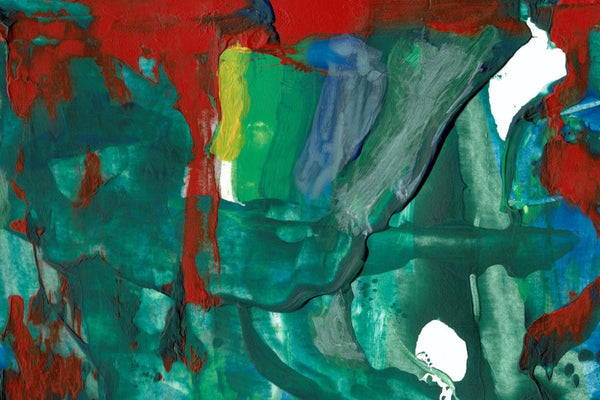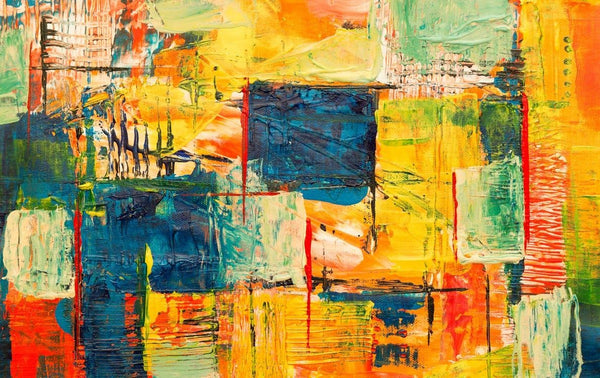A Beginner's Guide to Understanding Abstract Art 📰

Have you ever stood in an art gallery extremely perplexed with the artwork in front of you? Is it a volcano, the evening sky or perhaps a metaphysical character that surpasses human understanding? Did this confusion ever make you doubt your art-interpreting skills? If you have asked yourself any of these questions, you’re not alone.
Understand art is not only about looking at what is placed in front of you. It is a much more in-depth process to think like the artist, and empathetically understand the creative process from start to finish. Similarly, creating abstract art is more than simply combining a number of colors and arbitrary shapes to categorize it as ‘art.’ This is your guide to finally master the skills and appreciate abstract art in its most authentic way.
What Is Abstract Art?
Abstraction is a deviation from reality. It uses symbolism in the form of shapes, colors, forms and gestural marks to achieve the illusion of reality. The goal is to represent a new perspective – one that is the view of the artist and the way they see a particular subject.
In simple terms, abstract means to withdraw something from something else. This term can be generalized to an object, landscape or human subject since abstraction does not coincide with visual reality.
Throughout centuries, abstract art is seen to depict virtues of order, purity, simplicity and spirituality. The overall goal is noticeably different from representational art and, thus, should be evaluated differently too.
How Do You Begin to Understand Abstract Art?
To understand abstract art, you need two things; an open mind and a wandering imagination. You need to be able to look beyond objects you already visually recognize.
Abstract art cannot be explained in words because the idea behind specific symbols speaks about the artist and the viewer, personally. In this sense, it is an experience that you have to undergo that is far from the realms of reality.
If you really have to pin an abstract art down in words, think of it as the mere opposite of representational or realistic art. While the latter expounds every wrinkle on the art, the former gives artists the freedom to trust their intuition and create a masterpiece worthy of the same audience.
Accept There Is No Right Answer
As human beings, we are bound to look for answers until our mind is at peace. If curiosity is one of the most common human emotions, it is also a relatively dangerous one. In the case of abstract art, this emotion can allow your mind to wander in search of specific answers the art does not aim to depict. It is the forceful nature to find a story or meaning behind a visual element in abstraction.
You have to learn to accept that abstraction does not aim to tell a story. The artist does not want you to decipher a particular meaning, but encourages imagination and involvement. This means that it is an emotional experience that is personal to each individual viewer and provokes different forms of representational realities.
Abstraction of Subjects
The way an abstraction is presented is solely up to the artist. Some use predetermined methods such as Minimalism that simplifies forms into basic shapes, or Cubism that presents subjects using multiple viewpoints. Other artists don’t use particular methods, but trust their intuition to produce artwork that only “borrows” from reality, but does not represent it.
No matter the methodology used, the final destination is the same; abstraction aims to create artwork that provokes thought.
How Do You Look at Abstract Art?
Now that you know the preliminary steps to understanding abstraction, how do you essentially look at abstract art?
Imagine you are at an opera, listening to the orchestra play innumerable symphonies on the guidance of the conductor. You will not concentrate on each violin, trumpet, trombones and contrabassoon. Instead, you will let your mind wander throughout the symphony and concentrate on the highs and lows, twists and twirls and intro and outro of each sound.
Similarly, rather than divulging into just one aspect of the painting, you will allow yourself to submerge into the overall imagery. You will allow your eyes, mind and observational senses to wander around, trying to grasp the first few emotions when you come across the abstraction.
Abstract art can be appreciated in terms of each individual element; color, line, shape, symbol, texture, space etc. The artist's strength lies in their ability to create a strong composition of each or all the elements and provoke an emotion in the viewer. However, while trying to understand and observe each abstract image, it is important to keep some points in mind:

How Do You Paint Abstract Art?
If you understand abstract art and always dreamt of painting a piece as a beginner, there are various approaches you can take.
Many people claim abstraction only requires a bunch of random signs, symbols and shapes that go together to create a picture. However, why don’t we see these people make this ‘easy’ art? It is only because, like any other form of art, abstraction requires technique and an approach to start somewhere.
The three basic components to get your abstract artwork started are:
- Composition: This is the focal point of your painting and the placement of each object. The composition of the painting determines the shape and size of each object, depending on your canvas size and where they sit in that limited space.
- Color: Abstraction paintings may seem like an amalgamation of different colors arbitrarily thrown together to form ‘artwork.’ However, each color gradient and palette is well-thought out so it complements all the other colors used. You can choose only a few colors and experiment around with them by mixing two or more colors to have a unique color emerge, distinct to your canvas.
- Texture: Texture is yet another important point to consider when starting out with your abstract artwork. If you choose to employ the simplest texture of painting thick, make sure it remains consistent throughout the painting. You don’t want a haphazard painting filled with various forms of textures that just don’t work together.
What to Paint After Employing the Basics?
After you have practiced the basics of abstract art, there are various different techniques you can use to make your artwork stand out. Some of them include:
Painting abstract artwork can be challenging, even if you master all the skills to get you started. It is essential to know that you are not alone and it’s understandable to be stuck somewhere. Read here to find the different challenges you may face, and the various methodologies you can employ to fight off those challenges.
Abstract Techniques Through the Eyes of the Artist
By understanding the basics of abstract art, it is also important to know how various artists throughout history retained these techniques through their artwork. The twentieth century marked a revolution in what was considered ‘pure art.’ It was the time when many were going against formal teachings and employing personal methods of art to express what then came to be known as abstract art.
Cubism: Kazimir Malevich and Piet Mondrian
Cubism, as stated by its name, is the way to form different cubical shapes throughout your canvas. Russian artist, Kazimir Malevich, furthered cubism by using different color gradients in each grid, while De Stijl painter, Piet Mondrian, painted flat grids to depict the concept of infinity.
Abstract Expressionism: Jackson Pollock, Willem de Kooning
Abstract expressionism paintings are abstraction using gestures. They depict the painter’s literal action such as walking on the canvas dripping paint (Jackson Pollock), or revealing aggressive brushstrokes (Willem de Kooning). Both artists emphasized color and how their work corresponds with their emotions and intentions used to paint the artwork.
German Expressionism: Wassily Kandinsky
Germany expressionism comprises saturated color palettes that correspond with human emotion. Wassily Kandinsky, a German Expressionist artist, is popular for using vividly colored paintings to depict his emotions. He believed music also corresponds to abstraction with its ability to represent reality without showing any form of it.
Fauvism and Orphism: Henri Matisse and Georgia O’Keeffe
Abstract art is the rejection of three-dimensionality and Fauvism and Orphism, both, attempt to do just that. The former depicts objects using arbitrary colors, while the latter uses bright patches of color rather than actual objects. Painters such as Henri Matisse and Georgia O’Keeffe were, both, popular painters in these nodes. They were known for their use of color and patches that intricately defined art techniques.
Many people assume artwork may be too easy or too difficult to understand. Without knowing the basics, there is always a struggle to comprehend what type of artwork is in front of you, or what type of artwork you’d like to create. And of course, this blog only touches the surface of some very essential points that need to be considered. The key is to imagine and let your thoughts wander in places they might have never been before!












